Buying Guide for the Best 43 Inch Tvs
Choosing a 43-inch TV is a great option for bedrooms, smaller living rooms, or spaces where you want a balance between screen size and room fit. When shopping for a TV in this size, it's important to consider how you'll use it—whether for streaming, gaming, or regular TV watching. Understanding the key specifications will help you find a TV that matches your needs and ensures a satisfying viewing experience.ResolutionResolution refers to the number of pixels that make up the picture on the screen. The most common resolutions for 43-inch TVs are Full HD (1080p) and 4K (Ultra HD). Higher resolution means sharper and more detailed images. For most people, 4K is ideal as it provides a noticeably clearer picture, especially if you sit close to the TV. If you mostly watch standard TV channels or use the TV in a secondary room, Full HD may be sufficient. Choose 4K if you want the best picture quality for movies, streaming, or gaming.
Panel TypePanel type determines how the TV displays colors and handles viewing angles. The two main types are IPS and VA. IPS panels offer better viewing angles, so the picture looks good even if you're not sitting directly in front of the TV. VA panels usually have better contrast, making dark scenes look deeper and richer. If you have a wide seating arrangement, IPS is a good choice. If you watch TV mostly from the front and want deeper blacks, VA might be better.
Refresh RateRefresh rate is how many times per second the TV updates its image, measured in Hertz (Hz). Common values are 60Hz and 120Hz. A higher refresh rate makes fast-moving scenes look smoother, which is important for sports and gaming. For general TV watching and streaming, 60Hz is usually enough. If you play a lot of video games or watch a lot of sports, consider a 120Hz TV for smoother motion.
Smart TV FeaturesSmart TV features refer to the built-in apps and operating system that let you stream content from services like Netflix, YouTube, and others without needing extra devices. Some TVs have more user-friendly interfaces and a wider selection of apps. If you plan to stream a lot, look for a TV with a smart system you find easy to use and that supports your favorite apps. If you use an external streaming device, this may be less important.
ConnectivityConnectivity covers the types and number of ports available, such as HDMI, USB, and audio outputs. More HDMI ports let you connect multiple devices like game consoles, streaming sticks, or soundbars. Make sure the TV has enough ports for your needs, and check for features like HDMI ARC if you plan to use a soundbar. If you want to connect headphones or older devices, look for TVs with the appropriate ports.
Sound QualitySound quality is how well the TV's built-in speakers perform. Smaller TVs often have less powerful speakers, which can affect your experience, especially in larger rooms. If you want clear dialogue and decent bass, look for TVs with enhanced audio features or consider adding a soundbar. For casual watching in a small room, built-in speakers may be enough, but for movies or music, external audio can make a big difference.
Design and StandThe design and stand of the TV affect how it fits into your space. Some TVs have slim bezels and modern looks, while others are bulkier. The stand design can impact how much space the TV takes up on your furniture. If you plan to mount the TV on a wall, check that it supports standard wall mounts. Choose a design that matches your room and fits your setup.
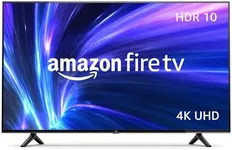
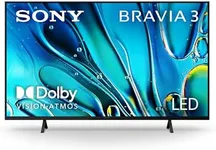

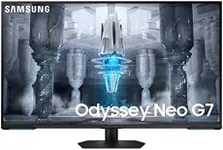
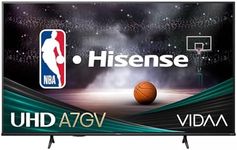
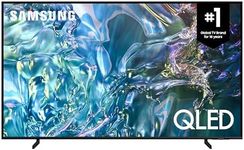
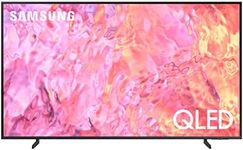
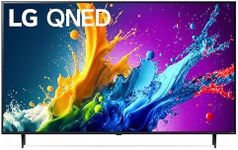
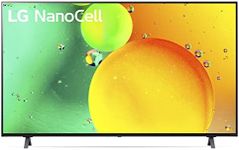
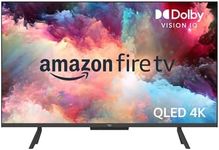
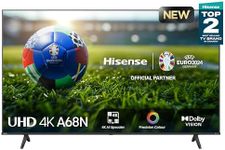
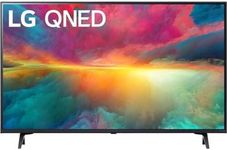
![Samsung 43 Inch M7 Black Smart Monitor with Smart TV Apps, 4k UHD, 4 ms Refresh Rate, USB-C, Multiple Ports, Gaming hub - (LS43DM702UNXGO)[Canada Version] (2024)](https://images-proxy.bestreviews.guide/5oIA5BCobQelCC61OZdIAttbQhg=/0x150/https://m.media-amazon.com/images/I/41OIbKN7SxL._AC_CX679_.jpg)
![Samsung 43" The Serif QLED HDR 4K Smart TV (QN43LS01B) [Canada Version]](https://images-proxy.bestreviews.guide/ov_vsmwjF1SgXoKK10A03MW4lU8=/0x150/https://m.media-amazon.com/images/I/31d-24982EL._AC_CX679_.jpg)
![SAMSUNG 43-Inch Class Crystal UHD CU8000 Series with Object Tracking Sound Lite, Q-Symphony, Ultra Slim, Solar Remote, Smart TV with Alexa Built-in - [UN43CU8000FXZC][Canada Version] (2023)](https://images-proxy.bestreviews.guide/sjMUp8t5Mr2dn5qk6jy3JDe2muU=/0x150/https://m.media-amazon.com/images/I/51jrO9u8JjL._AC_CX679_.jpg)

